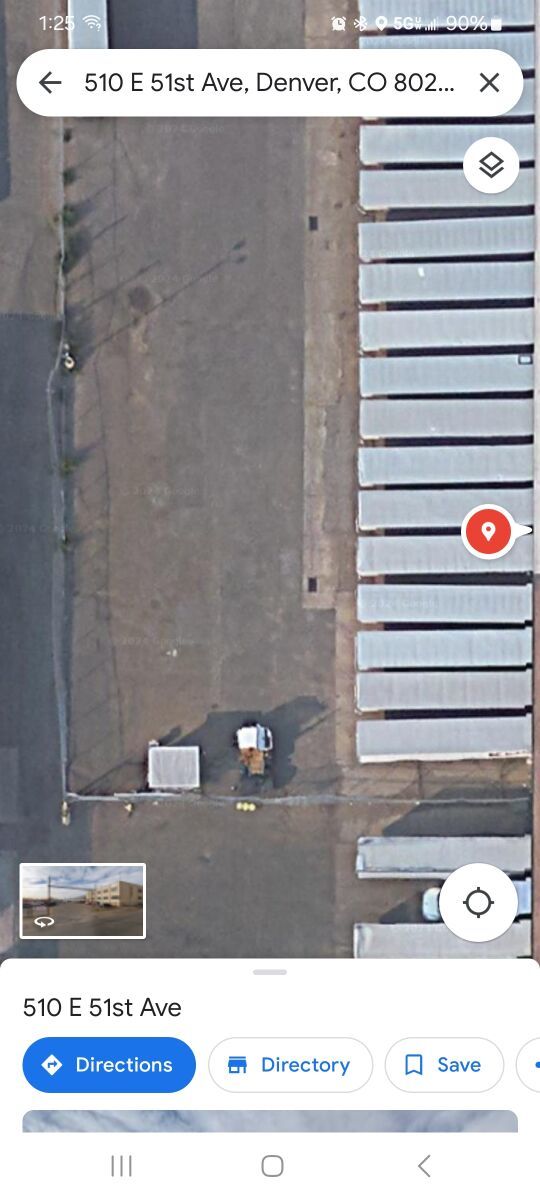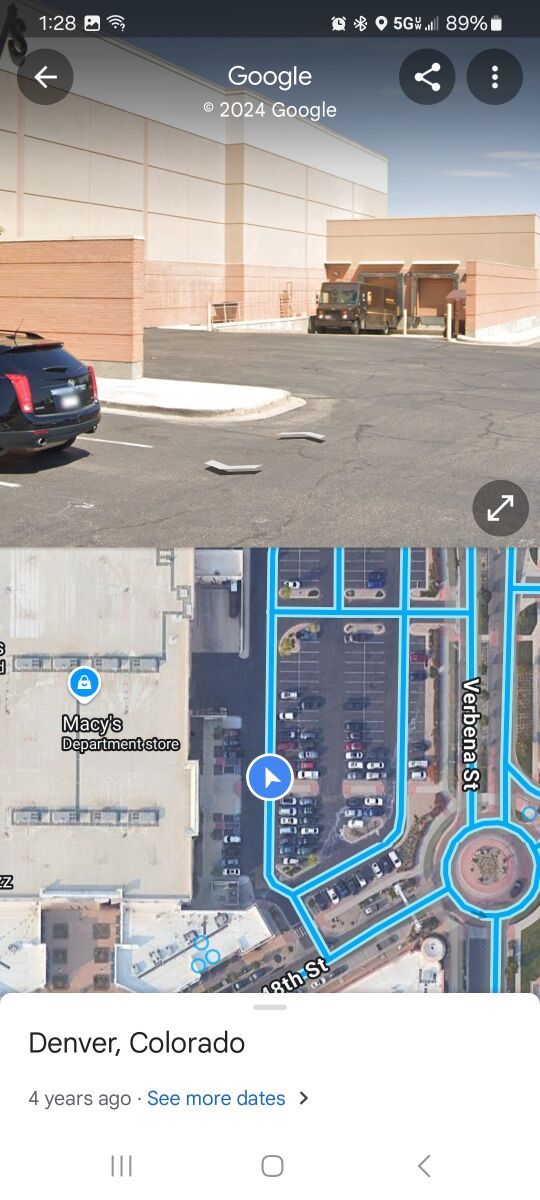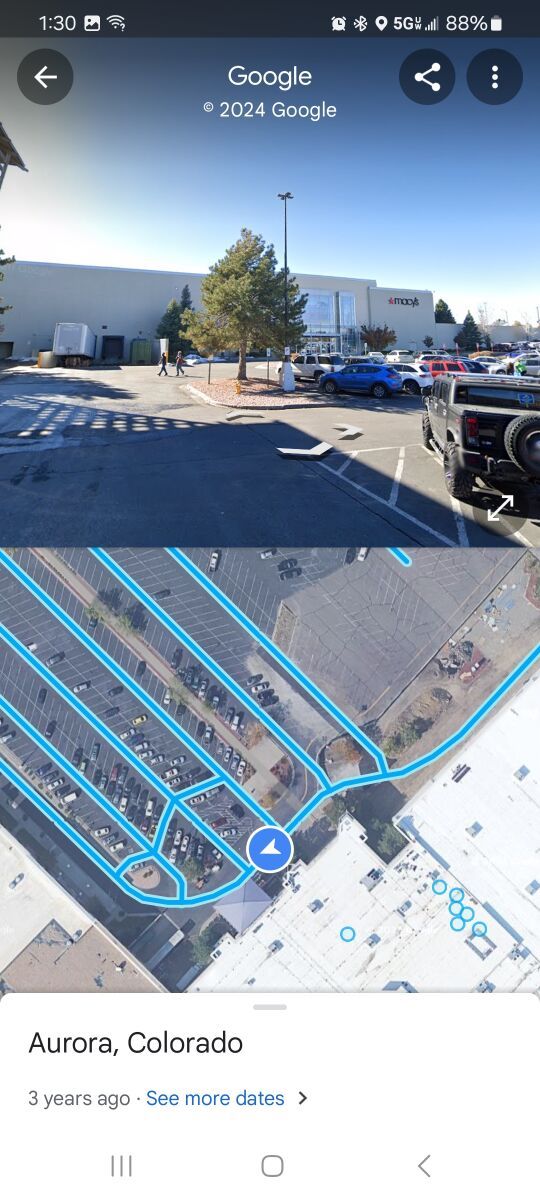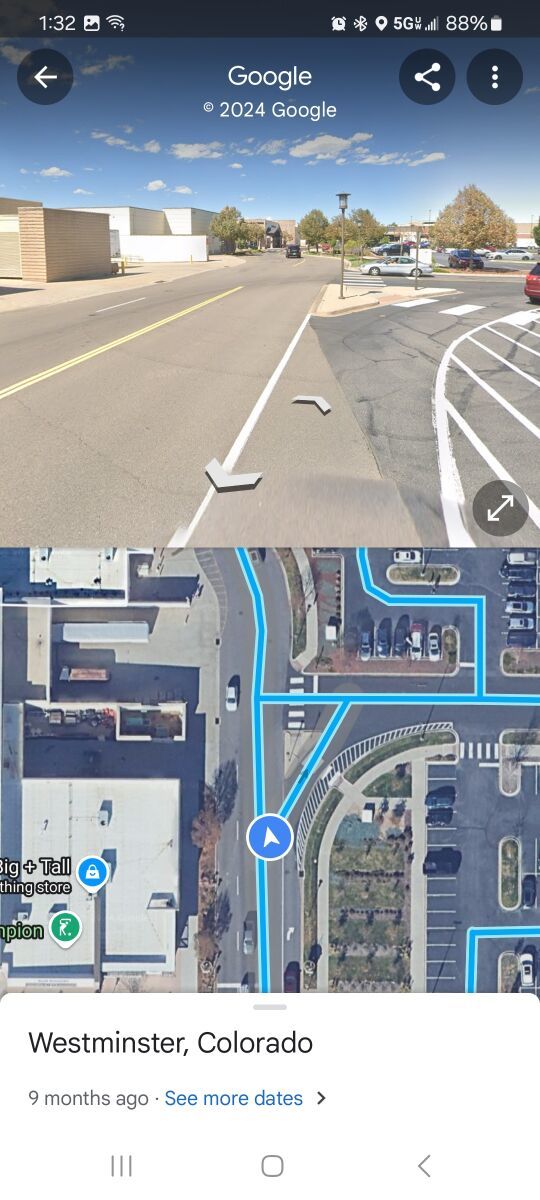New To Trucking And Stressed Out
Topic 34061 | Page 1
That first time can be scary because it is your new reality, and you have to solve it in your own. Here's a record of my very first week "alone":
My First Week Adventure As A Swift Driver
I know it's not as fast as a phone call, but you will get support here. Good luck.
Congrats on getting to this point. 2 things I always use for new customers.
1. Review your final approach route carefully. Wether that is provided by the company, customer or GPS. Call the customer and speak with someone that works with incoming trucks. They usually know the best route into the facility.
2. Use google earth to get a good look. Bounce that against the other information.
This is no guarantee, but gives you a leg up. Things can change so always keep that in mind.
Hello Nathan,
We all can relate to your stress because we all experienced it and probably still get stressed out at times.
I’d just like to expand on what PJ advised. Google Earth (the satellite view), has been my salvation. In my opinion and experience, to get optimal benefit from it you need a screen bigger than a phone. I use an Apple tablet, which is an IPad tablet.
What are you currently using for navigation and are you using Google Earth? Do you have someone experienced to call if you have a problem or question? If you need someone to guide you through the process and to learn it so you are self sufficient, get my email from my profile and shoot me a phone number. I can walk you through a few assignments until you have it down pat. Advance preparation is the key to successful navigation. Before too long, you will develop pattern recognition skills that will help you deal with new locations. Most of the transportation facilities we go to are cookie cutter to one extent or another and even locations that don’t seem at all similar, have common aspects.
So don’t get too stressed because you can reach out for help.
I am new to trucking, 6 weeks of training with a trainer which went great and I soaked up as much as I could. I am currently on my first solo run. Everything has went good so far but I’m am really stressed and overwhelmed at times. I really enjoy driving the hwy/interstates but it’s the finding loading and receiving locations and where to go that is killing me. Can anyone relate when you were starting your career? Does the stress get better over time showing up to new facilities that are not so obvious where you go especially if it’s tight?
Hey Nathan, totally relate! I don't remember a whole lot from those first several runs when I started but I recently went OTR again after about 6 years of doing mostly local and regional driving where I was going to the same customers alot and it was a bit of culture shock. Even though I've been driving for a little while I definitely experienced that fear of going somewhere new all over again almost every time I was going to a shipper or receiver. With modern tech it's usually really easy to find the actual location but I would worry about where I was going to stage or park if the place didn't have room for me when I got there.
Some of my biggest concerns:
"Am I ok to show up a couple hours early?"
"Should I just go ahead and drive in when I get there or stage on the street and walk in?"
"Which entrance should I take?"
"There's no where to park nearby...what if they can't take me right away?"
Feel free to add to the list lol.
Other than the solutions already presented such as using satellite view to scope the location out or calling the customer to ask about which entrance to use, where to stage, when to show up, etc...I think your biggest ally is simply getting more practice going to places you're unfamiliar with. I've been back out on the road now for a few months now and I don't worry nearly as much as I did when I first came back out here. I have a few tips that might help:
- Read/follow the signs. There are often signs saying where to stage, where to check in, phone numbers to call to check in remotely, etc. Keep your wits about you and don't forget to pay attention to the obvious.
- Ask for help or follow the other trucks that are already there. If there's a line, get in it. If there is no line and you're not sure where to go, ask another driver what to do. If you have a CB, hop on channel 19 and see if anyone can tell you what to do if it's not obvious.
- As you get close to the location, throw your flashers on and GO SLOW. This will help you not to miss the entrance. Unless you're on a busy highway or other road that it might be dangerous to do this, don't be afraid to slow down or even come to a stop if you need to before turning in to the location if that's what you need to do to verify you're in the right spot.
- Remind yourself that you're not the first new person to go to this location. IT'S OK TO MAKE MISTAKES. If you make a wrong turn or get a little turned around just find a place to pull over really quick, take a deep breath and get on your maps and figure out how to get back to the entrance. It's better to miss a turn or irritate a few people than to hit something or get in an accident because you were worrying too much.
If you want help feel free to post an address or picture on here of a place you might be going to and we might be able to help you figure out how to approach it. We're here to help. Good luck!
Shipper:
The customer who is shipping the freight. This is where the driver will pick up a load and then deliver it to the receiver or consignee.
Regional:
Regional Route
Usually refers to a driver hauling freight within one particular region of the country. You might be in the "Southeast Regional Division" or "Midwest Regional". Regional route drivers often get home on the weekends which is one of the main appeals for this type of route.
OTR:
Over The Road
OTR driving normally means you'll be hauling freight to various customers throughout your company's hauling region. It often entails being gone from home for two to three weeks at a time.
Interstate:
Commercial trade, business, movement of goods or money, or transportation from one state to another, regulated by the Federal Department Of Transportation (DOT).
HOS:
Hours Of Service
HOS refers to the logbook hours of service regulations.OWI:
Operating While Intoxicated
It's completely expected to feel stressed out as a new solo driver. It shows that you care about what you're doing! It took me a good six months to get over the "heart attack stage". When going anywhere new, I first check it on google maps, then google earth. I look at where the approaching turns are, which entrance is for trucks, where are the docks, and how do I anticipate setting up to back in. Google Earth will sometimes allow me to zoom in on signs, so I get an idea of parking availability, and sometimes even customer instructions. I also carry a pair of binoculars, so I can read distant signs when I actually get there, it can save frustration and time, like where do I need to go to check in? And I've learned to take everything in with me for check-in; all the load numbers, plate numbers for truck & trailer, drivers license, company information, phone.
Nate, in my earlier posts I have a link to a diary of my first week "alone". There are eleven (and more) issues you may run into, and how I solved them.
Relax.

It does get easier but you always gotta stay on your toes. Use Google Street View and sometimes you can see signs that say Shipping here, Receiving over there and similar. Like Deb I bring everything in, my notepad with all pertinent info, my license, and my phone, because sometimes needed info isn't on my tablet but is on my company's portal I can log into.
It gets less stressful. The biggest help is having systems in place, repeated processes that work so you eliminate uncertainty.
Recon, Intel, execute.
Doing proper recon and Intel gathering BEFORE You start your trip is what makes it less stressful.
1. Once route, hos and shutdown times and places are established, then procede to shipper and recievers phase.
2. Using satellite image and streetview and reviews determine entrance, staging/check-in parking, docking/backing syle, what's the safest, easiest back for the dock or drop? Check streetview for signs that say truck entrance. Zoom to see if there is one way traffic at the site.
3. Check the final mile route into and out for truck friendly, alternative routes and alternative parking. Memorize the street names so you can see the street signs and know it. Use street view to check danger areas.
4. Gather Intel from Google reviews, quite often will have photos and where the truck entrance and shipping office is. Check with other drivers and on here. Find a working number for the shipper/reciever and call for directions. If it's a difficult spot or you can't visualize your drop, ask the yard dog how most drivers do it.
5. Visualize your drop/dock, get an accurate mental photo based on the above steps of how you'll back, what it will look like when crowded, what dangers are there and alternative paths. Many DCs are one way traffic inside. Smaller businesses have a plethora of obstacles. Stores have a nightmare of cars,karens and difficult access.
6. Goal. Take your time and relax.
Wash lather rinse repeat. I just did local for a few days, I hadn't been to any of the stores. This was the exact process I used. It's the same one I used when I started. It just takes me a lot less time to do do now.
Here's some of the stores and the yard. See if you can use the process to determine how to get in and out. All were a double drop and hook except one. One of them is a blindside to straight back conversion. The yard is blindside for half the day.





Shipper:
The customer who is shipping the freight. This is where the driver will pick up a load and then deliver it to the receiver or consignee.
Drop And Hook:
Drop and hook means the driver will drop one trailer and hook to another one.
In order to speed up the pickup and delivery process a driver may be instructed to drop their empty trailer and hook to one that is already loaded, or drop their loaded trailer and hook to one that is already empty. That way the driver will not have to wait for a trailer to be loaded or unloaded.
HOS:
Hours Of Service
HOS refers to the logbook hours of service regulations.As the others have said, Google Maps and Google Earth are valuable for a bird’s eye view and street level view of truck traffic flow. Look for things such as guard shacks. With street view, look for things such as medians that might prevent a left turn from certain directions. Trucker Path reviews and Google reviews might provide helpful information from drivers who have been there before. Check to see if your company has a macro to receive turn by turn instructions. Sometimes, the truck entrance in on a different street than the office location at big facilities.
New Reply:
New! Check out our help videos for a better understanding of our forum features

















Preview:








 TT On Facebook
TT On Facebook
I am new to trucking, 6 weeks of training with a trainer which went great and I soaked up as much as I could. I am currently on my first solo run. Everything has went good so far but I’m am really stressed and overwhelmed at times. I really enjoy driving the hwy/interstates but it’s the finding loading and receiving locations and where to go that is killing me. Can anyone relate when you were starting your career? Does the stress get better over time showing up to new facilities that are not so obvious where you go especially if it’s tight?
Interstate:
Commercial trade, business, movement of goods or money, or transportation from one state to another, regulated by the Federal Department Of Transportation (DOT).
OWI:
Operating While Intoxicated